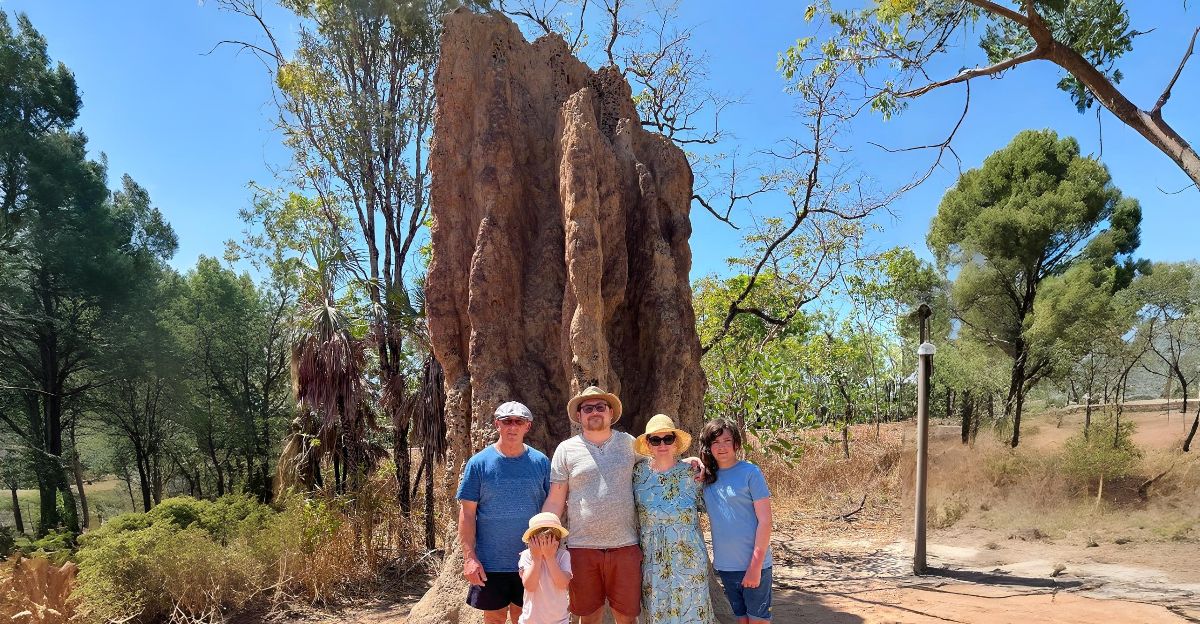
There are some pretty amazing structures all over the world, but it hardly ever happens that an insect-made structure can be seen from space. This vast network of about 200 million cone-shaped termite mounds, each roughly twice the height of an adult human, covers an area the size of Great Britain and is so immense it can be seen from space.
The structure, comparable in age to the pyramids of Giza and equivalent in volume to around 4,000 Great Pyramids, reveals an incredible natural wonder of scale and longevity, still inhabited and expanding today.
Master Builders Despite Their Size
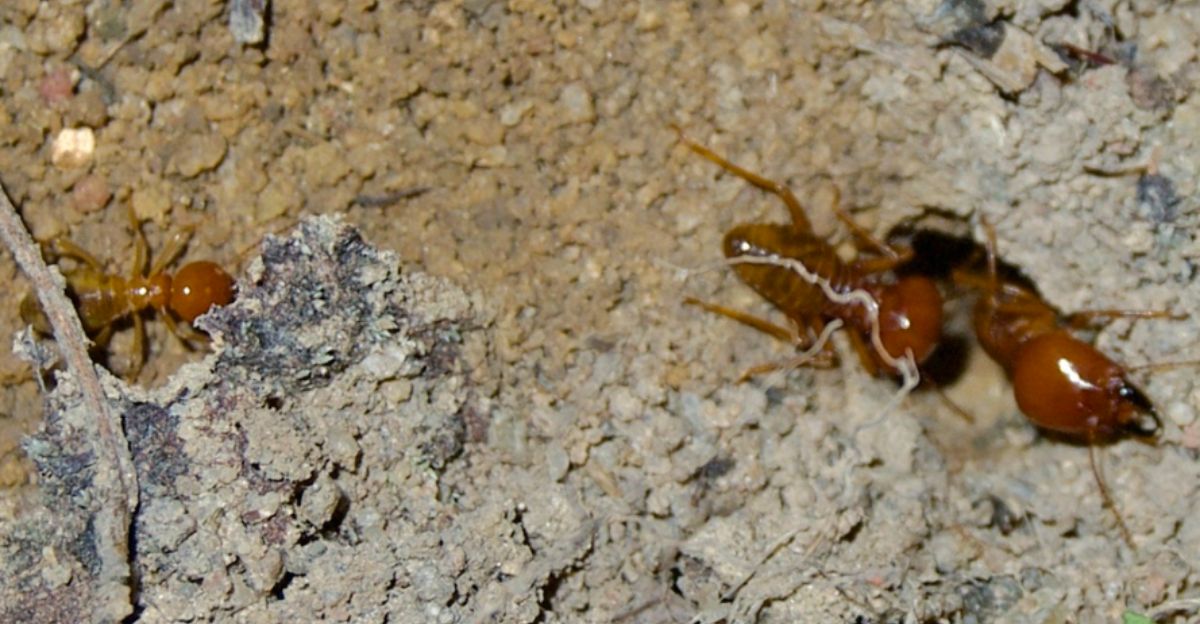
Despite being only half an inch long, these little critters have quite the building abilities. Syntermes dirus termites can construct enormous and complex mounds that can reach up to 98 meters in diameter. These mounds are not mere nests but intricate structures composed of soil, termite saliva, and feces, featuring extensive tunnel networks, ventilation shafts, and royal chambers.
The termites’ continuous excavation and soil displacement activities create durable, insulated habitats that regulate temperature and humidity, enabling colonies to thrive in harsh semi-arid environments. These mounds are often outlived by their original builders, but generation after generation would take off where they left off.
Natural Ventilation Systems
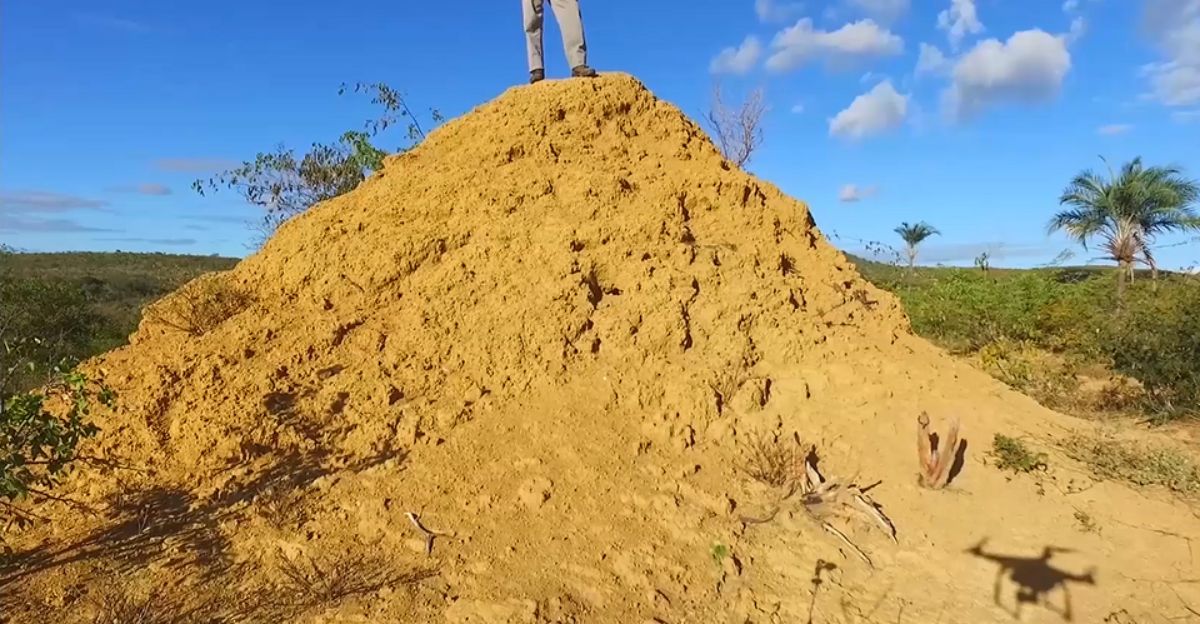
Termite mounds are remarkable constructions that show just how clever these little engineers are. They have sophisticated ventilation systems that regulate airflow to prevent overheating in hot climates. Inside the mound, a network of tunnels and conduits creates dynamic airflow driven primarily by temperature differences between the warm outer buttresses and the cooler central chimney.
During the day, warm air rises through the buttresses while cooler air sinks into the chimney, creating a convection cycle that circulates fresh air and expels carbon dioxide produced by the termites. At night, this airflow reverses as temperature gradients shift, effectively “breathing” fresh air into the nest and maintaining a stable internal environment.
Soil Movement Comparable to Human Constructions
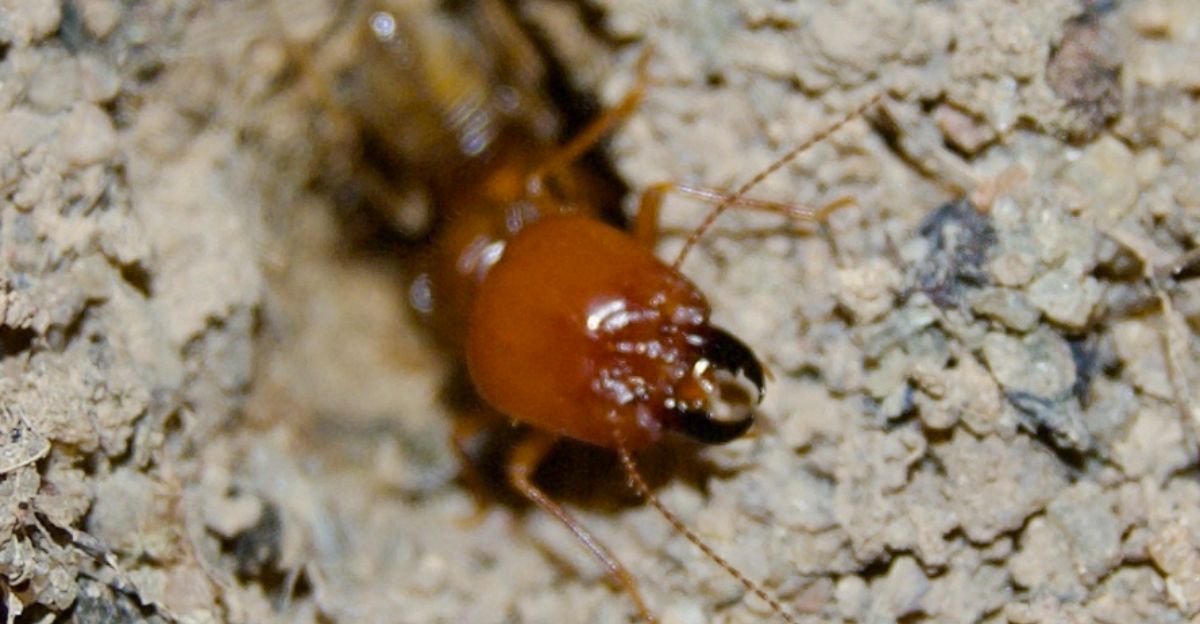
Despite their size, it’s pretty impressive how much soil these insects can move. “These mounds were formed by a single termite species that excavated a massive network of tunnels to allow them to access dead leaves to eat safely and directly from the forest floor,” said Study leader Professor Stephen Martin, from the University of Salford in England.
“The amount of soil excavated is over 2.3 cubic miles, equivalent to 4,000 great pyramids of Giza and represents one of the biggest structures built by a single insect species.” This massive soil displacement helps shape the landscape around them and also influences soil fertility and ecosystem dynamics.
Unique Function of the Mounds
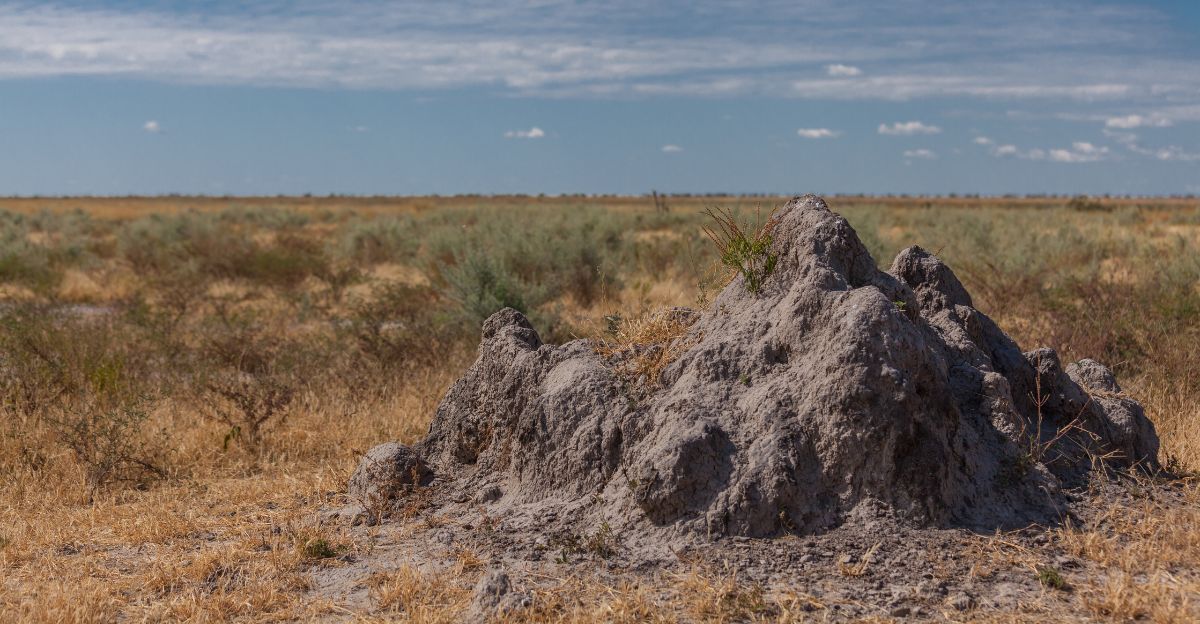
These mounds are so much more than housing for these insects. Termite mounds enhance soil aeration and fertility by constantly redistributing soil and organic matter, promoting water infiltration and nutrient cycling. They also act as biodiversity hotspots, providing shelter for various microorganisms and serving as a crucial food source for many predators. This way, these critters help sustain the delicate ecosystem balance around them.
Long-Term Construction Effort
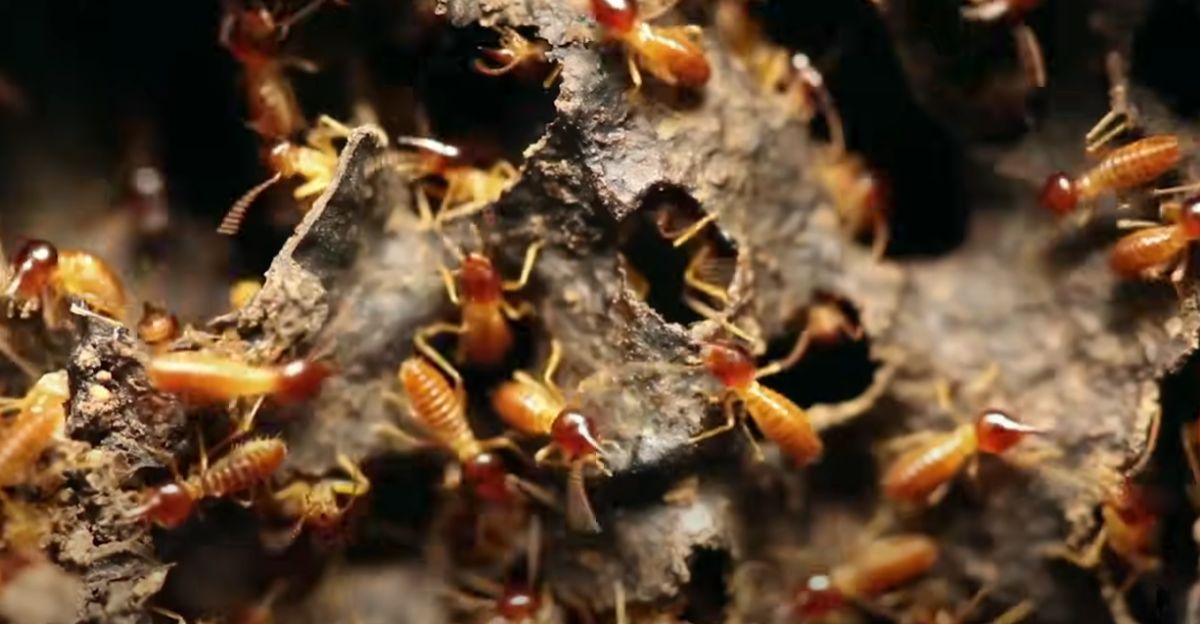
The construction of termite mounds is a long-term, continuous effort spanning decades or even centuries. These towering structures are not built all at once but gradually expanded and maintained by successive generations of termites working together. In some cases, mounds outlive the original colony that built them, with new termite colonies occupying and enlarging the structure over time.
“Some mounds are tall and narrow, while others are small and compact. Depending on the physical and behavioral parameters at play, the mounds of different termite species can look remarkably different,” said Alexander Heyde, a Harvard Ph.D. student and co-first author of the study. This ongoing construction is driven by environmental cues like temperature fluctuations and moisture, allowing the mound to adapt and persist as a stable habitat in challenging climates.
Ongoing Occupation by Termites
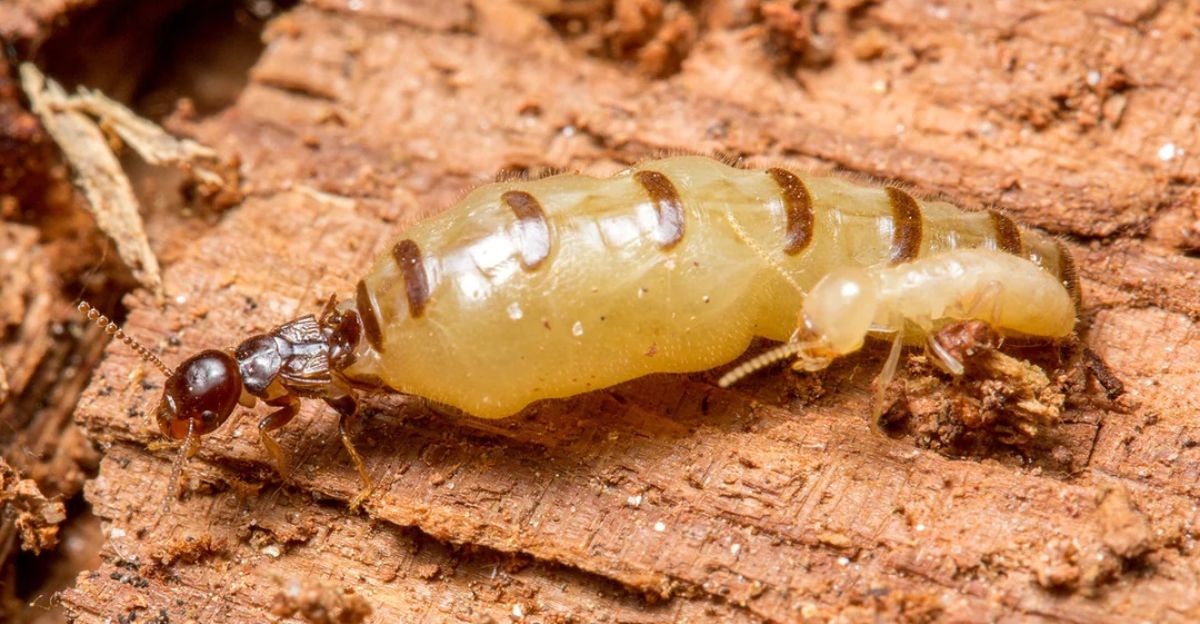
These massive termite mounds are continuously occupied and maintained by successive generations of termites. While a queen termite may live up to several decades, the mounds can persist for thousands of years, with new colonies moving in and expanding the structures after previous occupants die or move on.
“It’s incredible that, in this day and age, you can find an ‘unknown’ biological wonder of this sheer size and age still existing, with the occupants still present.” Professor Stephen Martin, from the University of Salford in England.
Scientific Discoveries and Research
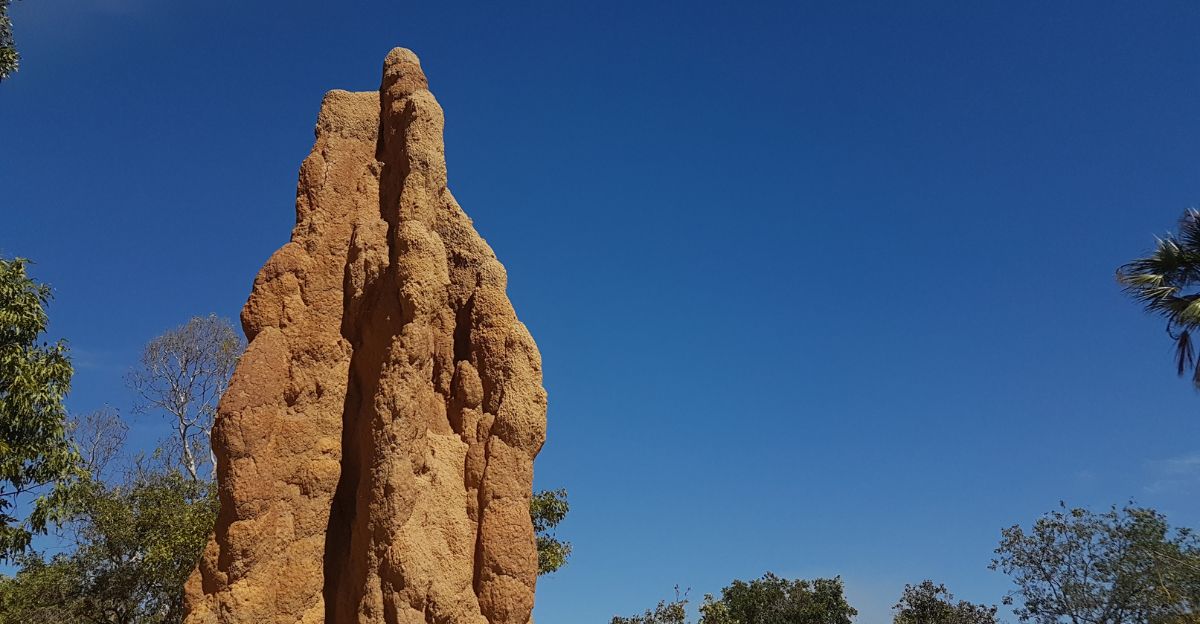
Studies reveal that termites play a crucial role in carbon sequestration by harvesting organic material and facilitating soil processes that lock atmospheric carbon underground as calcium carbonate, helping mitigate climate change. Researchers are examining termite mound architecture to inspire sustainable designs that harness natural ventilation and temperature regulation, potentially revolutionizing energy-efficient construction.
“An understanding of the natural processes involved in termite mound construction and function can be adapted to inform engineering applications related to the construction of man-made structures that require zero or minimal energy inputs,” said the NSF award letter.
Scale and Visibility of These Mounds
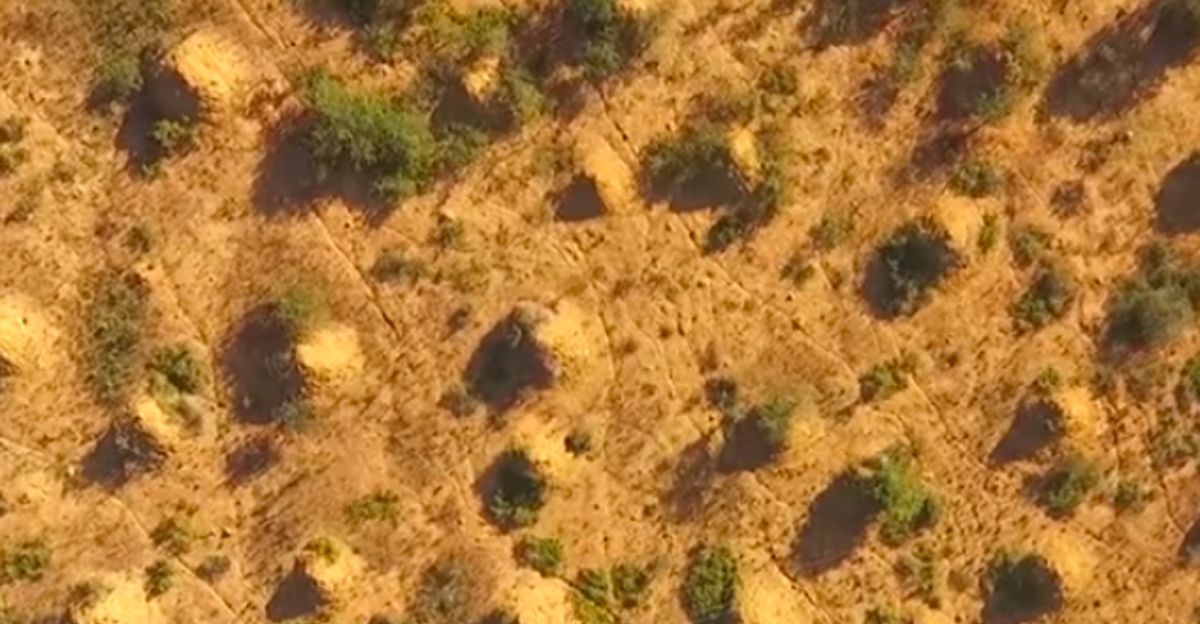
The termite mounds are cone-shaped, about 8 to 10 feet tall and up to 50 feet wide. While they appear as scattered formations from the ground, satellite images reveal a massive, interconnected bioengineering marvel covering 88,803 square miles, larger than England, Scotland, and Wales combined.
This immense size and density result from millions of years of continuous construction and expansion by termite colonies.
Broader Significance

We have much to learn from these little builders, and researchers are out to know exactly how we can learn from them. They also play a big part in nutrient cycling by gathering essential elements like phosphorus, which often limit plant growth in savannahs and drylands, enhancing soil fertility and ecosystem productivity. Termite mounds act as natural ecosystem engineers that maintain landscape health, promote biodiversity, and contribute to climate regulation, making them far more important than they might seem.
Explore more of our trending stories and hit Follow to keep them coming to your feed!

Don’t miss out on more stories like this! Hit the Follow button at the top of this article to stay updated with the latest news. Share your thoughts in the comments—we’d love to hear from you!







